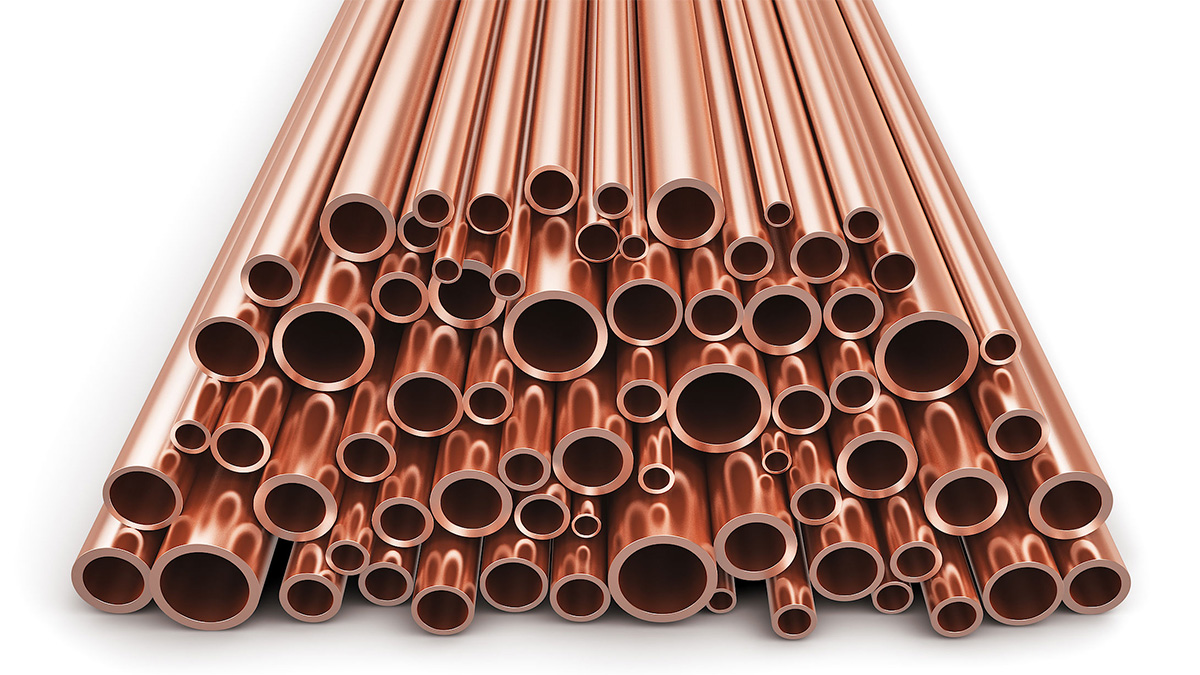Titanium alloys are widely used in aerospace, chemical, marine, and automotive industries due to their excellent strength-to-weight ratio, corrosion resistance, and ability to maintain strength at high temperatures. However, the disadvantages of titanium alloys are poor thermal conductivity and strong reactivity with tool materials. Their high strength, and low elastic modulus make them difficult to cut materials.
Features of titanium alloy machining:
With excellent comprehensive mechanical properties, low density, and good corrosion resistance, titanium alloys are strategic metal materials that can be used in the cutting tool industry for the development of new space age products.
The machining environment required for titanium alloys:
Titanium alloys do not require lubrication during dry machining, however high-pressure coolant processing is still often used to achieve a better cooling effect. The high pressure forces the coolant to penetrate the contact area between the tool-workpiece and the tool. Indirect cooling, general submersion, closed groove processing, and thermal strengthening processing of titanium alloys at a high temperature can also be used to reduce the cutting force volume of coolant required, making it more environmentally friendly by minimizing the amount of lubrication in the processing environment.
-
Dry processing environment:
A dry processing environment is where no lubrication is required during machining. The advantages are a cleaner working environment, cleaner parts, no waste generation, reduced machining costs, and reduced chip recycling costs due to the absence of residual oil.
-
High-pressure coolant environment:
The high-pressure coolant can penetrate the contact area between the tool-workpiece and the tool chip, to achieve a better cooling effect. This reduces tool wear by lubricating the contact area. The high-pressure coolant jet forms a hydraulic barrier between the tool and the workpiece which penetrates the interface for faster cooling, even at high processing speeds. The coolant jet also helps in removing chips from the cutting area.
-
Low-temperature environment under low-temperature lubricant:
Low-temperature lubricants such as liquid nitrogen (LN₂), carbon dioxide (CO₂), or other low-temperature lubricants, are injected between the chip and the tool interface to cool the cutting area. The application methods of low-temperature cooling include pre-cooling of the workpiece, indirect cooling of the tool blade, general submersion, closed groove processing, etc. LN₂ absorbs heat, evaporates quickly, and forms a fluid air cushion between the chip and the blade surface, which acts as a lubricant. LN₂ is non-toxic, inexpensive, and clean. It effectively removes heat from the cutting zone and minimizes tool wear. It can also introduce compressive residual stress on the machined surface and improve its fatigue life.
-
Thermally strengthened processing environment:
In this environment, the material being processed is heated to high temperatures, thereby reducing the strength of the material. The flow stress and strain hardening rate of the material decreases with increasing temperature. The purpose of this method is to increase material removal rates without sacrificing tool life. The temperature increase of the workpiece is achieved by laser, plasma, gas, or induction heating. Therefore, machining titanium alloys at high temperatures can reduce cutting forces, eliminate coolant, and make it more environmentally friendly. In addition, it reduces vibrations in the tool-work-mechanical system due to segmented machining.
-
Minimum Lubrication Levels for Processing Environments:
A mixture of oil and compressed air is provided between the tooling interfaces in the form of a mist. The small oil droplets carried by the air fly directly into the working area, providing the required cooling and lubrication. Mist is created through the process of atomization, which converts a bulk liquid into a spray or mist through a nozzle. Spray lubrication significantly reduces the temperature in the cutting zone, thereby increasing tool life.
Classification of titanium alloys:
According to the characteristics of the structure after annealing, it can be divided into α, α+β, β type titanium alloys.
-
α-type titanium alloy has low density:
It has good thermal strength and thermal stability, good welding performance, and good performance at room temperature, ultra-low temperature, and high temperature, but cannot be strengthened by heat treatment. TiAl still has high strength at 600 °C and has good performance in creep properties, thermal stability, fatigue properties, and fracture toughness. It is commonly used in the manufacture of jet engine turbine disks and blades.
-
α+β type titanium alloy duplex alloy:
The structure is stable, and the toughness, plasticity, and high-temperature deformation properties are improved with the increase of β-phase stabilizing elements. It has good hot press workability and can be quenched and aged to strengthen the alloy. The strength after heat treatment is about 50% to 100% higher than that in the annealed state. It has high-temperature resistance and can work for a long time at a temperature of 400~500°C, but its thermal stability is inferior to that of α titanium alloy. Among β-type titanium alloys, Ti-6Al-4V is the most used of all titanium alloys, and its output in the United States accounts for more than half of titanium alloy output. With its excellent comprehensive mechanical properties and machinability, it is widely used in the manufacture of aerospace parts, such as the application of titanium alloy aero-engine impellers.
- β type titanium alloys. Beta titanium alloy is a single-phase alloy composed of a beta phase solid solution:
Its strength at room temperature is high, and its cold working and cold forming processing abilities are strong. It has high strength without heat treatment. After quenching and aging, the strength of the alloy is further strengthened, and the room temperature strength can reach 1372~1666MPa. However, its thermal stability is poor so should not be used at high temperatures.
Features of titanium alloy machining:
- Titanium alloy has poor thermal conductivity so is a poor thermal conductor material. Because its thermal conductivity is low, the high heat generated during processing cannot be effectively diffused. The contact length between the cutting edge and the chip of the tool is short so that a large amount of heat is accumulated on the cutting edge. The temperature rises sharply, resulting in a decrease in the red hardness of the cutting edge, softening of the cutting edge, and accelerated tool wear.
- The affinity of titanium alloy is large, resulting in serious sticking to the cutting tool during processing. This increases friction between the tool body and the workpiece, creating a lot of heat, which reduces the service life of the tool.
- With the increase of working temperature, chemical activity increases, making alloys easy to react with O, N, CO, CO₂, H₂O, etc. in the air. As the content of interstitial elements O and N increases, the surface of the workpiece is oxidized and hardened, making it difficult to process. The required cutting force of the tool increases, increasing the stress on the tooltip. The increased friction between the rake face and flank of the tool, and the workpiece results in rapid wear or collapse of the blade.
- Because the deformation coefficient of titanium alloy is also low, and the contact area between the tool and the chip during cutting is small. The high friction between the chip and the rake face will also increases the cutting temperature and accelerate the wear of the rake face of the tool.
- Because the deformation coefficient of titanium alloy is also low, and the contact area between the tool and the chip during cutting is small. The high friction between the chip and the rake face will also increases the cutting temperature and accelerate the wear of the rake face of the tool.
- Different processing methods give different processing difficulties for titanium alloys. Difficulty of machining processes, ranked from easy to difficult are: turning, milling, drilling, grinding, and drilling small diameter deep holes.
Tool material for titanium alloy machining:
The high cost of titanium alloy processing is the main reason hindering its widespread use. Seeking a high-efficiency and low-cost processing method has become a hot topic in today's titanium alloy research. The selection of materials has a great influence on the processing of titanium alloys. Ideal tool materials for titanium alloys must have the combined properties of high thermal hardness, good toughness, wear resistance, high thermal conductivity, and low chemical activity. The tool should also have good impact resistance when milling. The main tool materials used to process titanium alloys in production today are cemented carbide, polycrystalline diamond (PCD), polycrystalline cubic boron nitride (PCBN), etc. Cemented carbide and PCD tools are considered to be ideal for machining titanium alloys.
Cutting principles of titanium alloy cutting:
-
Cutting speed:
Cutting speed affects the temperature of the cutting edge, which can lead to overheating of the cutting edge, causing serious cutting-edge bonding and wear. Therefore, to ensure greater tool durability, an appropriate cutting speed should be selected to reduce costs and ensure processing quality.
-
Infeed depth and pass amount:
Changing of the number of passes has little effect on the temperature, so it is reasonable to reduce the cutting depth and increase the number of passes. However, to avoid the hard oxide layer and subcutaneous pore layer, the depth of the cut should reach the unoxidized metal layer of the substrate. This will improve the life of the tool.
-
Tool geometry:
When cutting titanium alloys, the selection of geometric parameters such as rake angle and relief angle suitable for the processing method and the proper treatment of the tooltip will have an important impact on the cutting efficiency and tool life. When turning, to improve the heat dissipation conditions and strengthen the cutting edge, the rake angle is generally 5°~9°. To overcome the friction caused by spring-back, the flank face of the cutter body is generally 10°~15°. When drilling, by shortening the length of the drill bit, increasing the thickness of the drill core and the amount of guide cone, the durability of the drill bit can be improved several times.
- Clamping force:
Titanium alloy is easy to deform so the clamping force should not be too large. Especially during the finishing process, certain auxiliary support should be selected.
-
Cutting fluid:
Cutting fluid is an indispensable process lubricant in titanium alloy processing, however cutting fluids containing chlorine or other halogen elements and sulfur can adversely affect the mechanical properties of titanium alloys.
Due to its excellent properties, the proportion of titanium alloys used in the aerospace industry is increasing year by year. However, due to the high cost of cutting and low processing efficiency, current applications are still greatly limited. With the continuous improvement of tool material research and development and processing technology, the processing efficiency of titanium alloy will be greatly improved, and the processing cost will gradually decrease. This will promote wider applications of titanium alloys in shipbuilding, automobile manufacturing, electronics, marine development, the chemical industry, and other fields.














